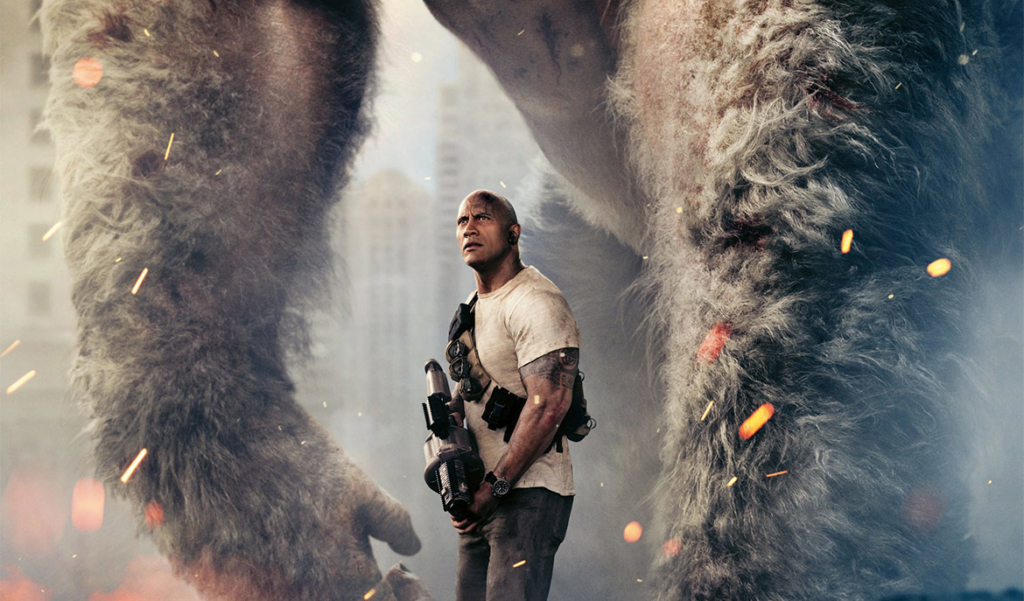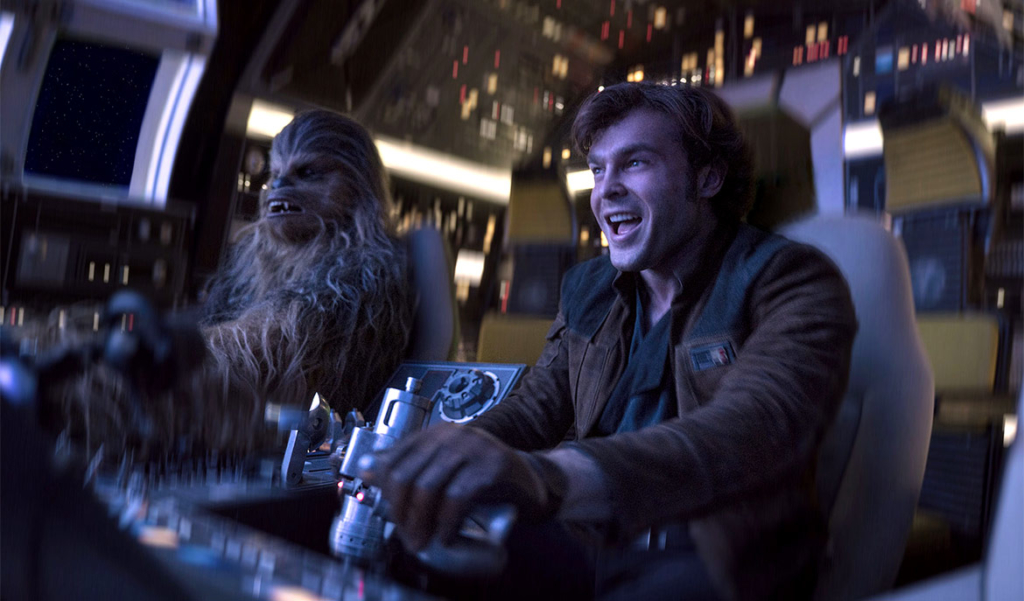Author: Conor Regan
Good Call: Nine Times the Academy Got it Right
We all know the Academy gets it wrong sometimes.
Like when Shakespeare in Love won Best Picture over Saving Private Ryan, or how The Shining wasn’t even nominated, or when Dances With Wolves cleaned up in 1991 (I mean, c’mon, it’s good, but not that good).
But what about when they called it right? When tradition was defied with a surprising choice, or an overlooked creative was finally given his or her due?
We don’t hear about those moments as much.
Here are some of the wisest, most surprising, just plain best decisions ever made at the Oscars.
Parasite Wins Best Picture

It was assumed that Parasite would take home Best International Feature in 2020.
A turn up for the books so, when it was awarded Best Picture too.
It’s even more surprising when you consider the stacked card from that year: The Irishman, Marriage Story, 1917 and Once Upon a Time in Hollywood… All great films, all more classic, Oscar-y, choices than the winner.
But, win it did, becoming the first non-English film to take home the night’s biggest prize.
Hopefully it opens the door for many more.
Roger Deakins Wins Best Cinematography
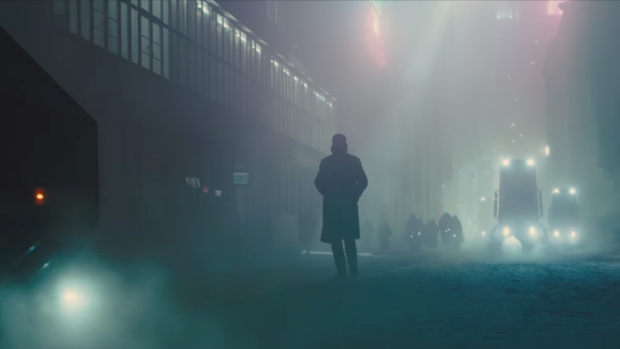
It was fourteenth time lucky for Roger Deakins at the 90th Academy Awards.
One of Hollywood’s most celebrated cinematographers, his filmography speaks for itself – The Shawshank Redemption, Prisoners, and No Country For Old Men, to name a few – and although oft nominated, he’d never won the big one.
That was until 2018, when he was rewarded for his depiction of the brutal, beautiful dystopia of Blade Runner 2049.
He wouldn’t have to wait as long for his second, winning in 2020 for his innovative work on 1917.
Frances McDormand Wins Best Actress
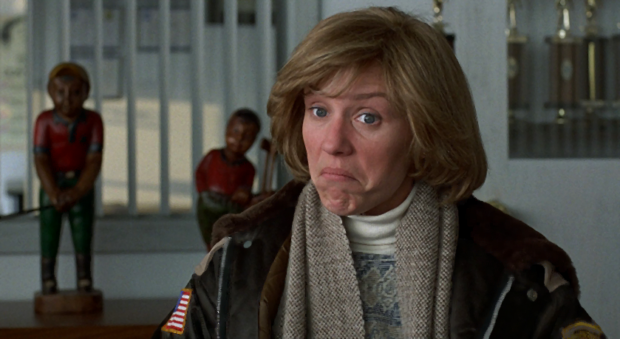
Of all the films nominated in 1997, Fargo is the one that has passed the test of time (and with flying colours, I might add).
However, it underperformed on the night, winning only two of its seven nominations.
At least Frances McDormand won Best Actress. I’ll leave it to writer Dan Jackson to sum up why (you can read the full article here):
Oh, you betcha!
The Lord of the Rings: The Return of the King‘s Record-Equalling Haul
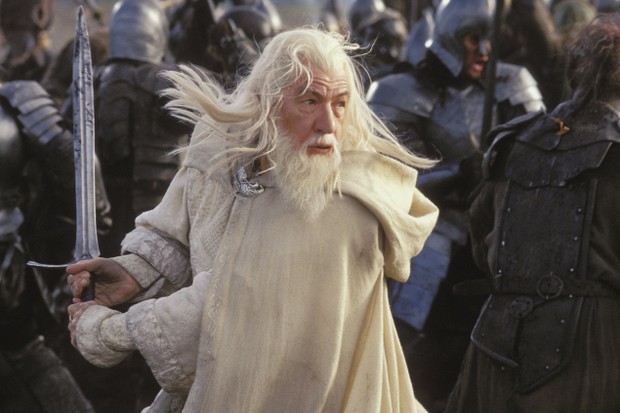
Fantasy movies: the only genre less popular than Horror and Sci-fi at the Oscars.
It’s rare to see one nominated, let alone win. So it was nice to see the Academy go against tradition in 2004.
Besides cleaning up with a massive 11 awards – equalling Ben-Hur and Titanic‘s record – The Return of the King was also the first bona fide Fantasy to win Best Pic.
A well-deserved victory lap for a staggering cinematic achievement.
Trent Reznor and Atticus Finch Win Best Original Score
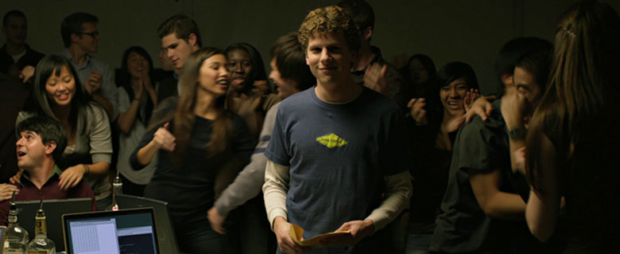
Career pivots don’t come more successful than Trent Reznor and Atticus Finch’s foray into movie music.
The Social Network would be the first of many, and what a way to start.
It’s a fantastic score. All moody synths and twitchy rhythms, it’s atmospheric, anxious, and haunting, and key to why the film works so well.
Hans Zimmer was nominated that year too, for his awesome Inception soundtrack. Any other year, he probably would have won – but Reznor and Finch deserved it.
The Academy doesn’t often go for newcomers, but I’m glad they did in 2011.
Martin Scorcese Finally Wins Best Director
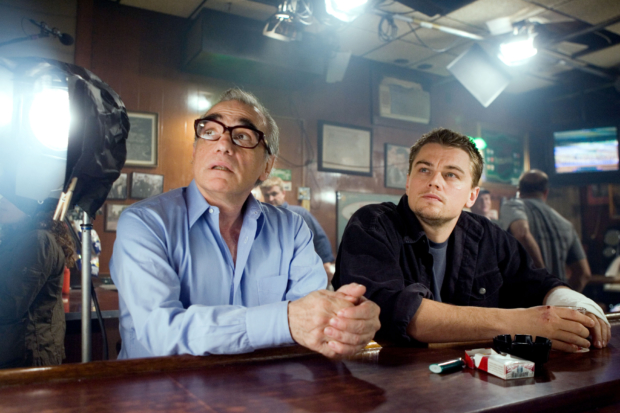
The Academy hasn’t been kind to ol’ Marty.
Not only has he missed out on Best Director for some absolute masterpieces, but he wasn’t even nominated for some of his best work – I’m talking Mean Streets, Cape Fear, King of Comedy and Taxi Driver.
Still, at least he won for the ludicrously entertaining The Departed.
Almost makes up for him not winning for Goodfellas. Almost…
Adrien Brody Wins Best Actor over Daniel Day-Lewis
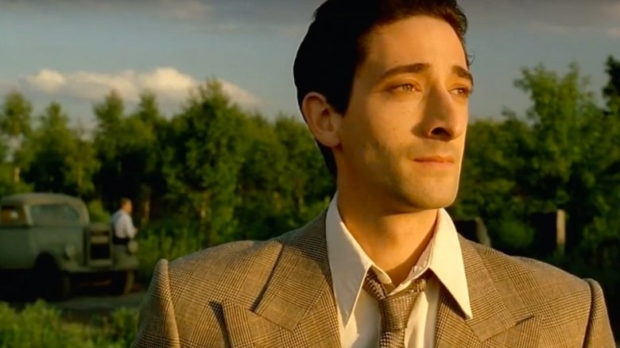
It was expected, for his scene-stealing Bill the Butcher in Gangs of New York, that Daniel-Day Lewis would win his second Best Actor statue.
But Adrien Brody, as Władysław Szpilman in The Pianist, took it in the end – and deservedly so.
It’s a wonderful performance. See for yourself:
While a lesser actor may have gravitated towards theatrics and melodrama, Brody wisely opts for subtlety, restraint and understatement. His physical transformation, while shocking, is incredible too.
The menacing Bill or the dignified Władysław. A tough call between two very different, and two very great, performances – but the Academy was on the money.
Spirited Away Wins Best Animated Feature
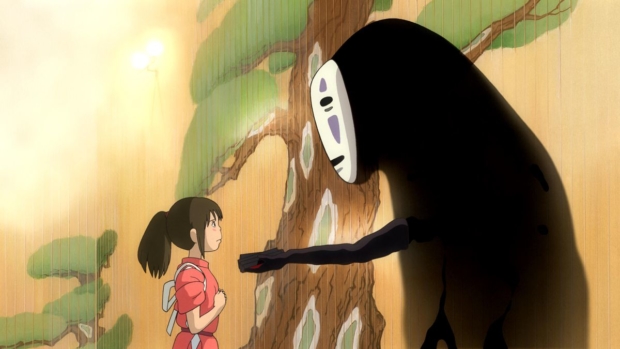
Pixar and Dreamworks have generally dominated this category, but this Studio Ghibli wonder was an exception to the rule.
It would have been a crime if it hadn’t won, really. Delightful, charming, moving, stunning to look at… All those things and more. Spirited Away is timeless.
Should have won Best Picture that year, too.
La La Land Wins Best Picture Over Moonlight
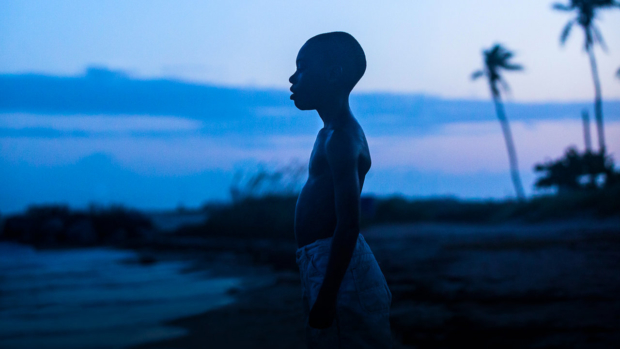
No, wait… Moonlight won over La La Land. Damn, it is easy to mix them up!
Seriously though. #Envelopegate was unfortunate for all involved. The La La Land team were stranded onstage holding an award that wasn’t theirs to hold, and everyone assumed it was poor Warren Beatty’s fault (it wasn’t).
Most unfortunate of all, I’d argue, for Moonlight, whose win has been a bit overshadowed by the controversy on the night.
This shouldn’t be.
A stunning piece of work, it’s also one of the Academy’s most unexpected Best Picture decisions; remember it wasn’t just La La Land that year, but big hitters like Hidden Figures, Arrival, and Manchester By the Sea too.
Definitely one the Academy got right.
After they got it wrong. 😉
Written by Conor Regan.
Inflight Dublin provides a range of fantastic movies to airlines, including all your Oscar favourites. If you’d like to learn more, contact us at mail@inflightdublin.com.
Inflight Dublin Favourites: Christopher Nolan
To coincide with Tenet hitting inflight entertainment screens this month, we thought it’d be a nice idea to write a few words about our favourite Christopher Nolan films.
Hope you enjoy, and keep an eye out for more “Inflight Dublin Favourites” – coming your way soon.

Jamie Baker – Audio Services Lead
Prior to the release of Batman Begins in 2005, live-action Batman films had garnered a reputation for being campy, tongue-in-cheek, and often silly representations of the comic book icon and his Gotham City escapades.
The franchise was in dire need of an overhaul, but few people could have expected the dramatic shift in tone once Christopher Nolan took the helm.
Batman Begins is built on foundations of realism and grit. For the first time on the big screen, it tells the origin story of Bruce Wayne, the son of a billionaire who tragically loses his parents to one of the many criminals churned out by the sinister streets of Gotham City.
It takes relatively lesser-known villains from the Batman universe and magnifies them, creating complex characters with interesting motivations and unique relationships with Batman.
But what truly sets Nolan’s film apart from all the Batman films before it is its determination to focus in on Bruce Wayne as a character, adding layers of intrigue to the man behind the mask.
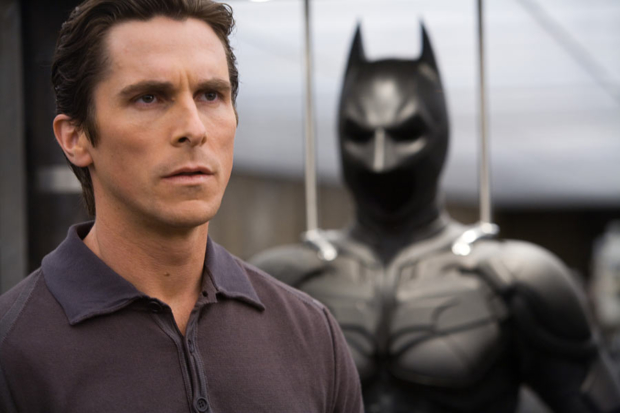
At its core, the film is a character study which follows a broken and brooding man’s search for purpose, fuelled by trauma, rage and an unwavering need for revenge.
While often overshadowed by the incredible narrative and mammoth Heath Ledger performance featured in the sequel, Batman Begins is my favourite Christopher Nolan film because it is the first movie to truly get Batman right.
It set up one of the most memorable and consistently brilliant trilogies in film history, and significantly raised the bar for all superhero movies that followed it.

Rika Argadireja – Metadata Executive
The Christopher Nolan movie I like the most is Interstellar. An epic sci-fi set in a dystopian time in the future when the earth is dying, it follows a group of astronauts who attempt to find a new home for mankind through interstellar travel.
The combination of time relativity adventures, space exploration, exceptional acting (I personally think that Matthew McConaughey’s acting is Oscar-worthy), an unpredictable cameo appearance, and aesthetically pleasing visuals perfectly compliment the story about humanity.
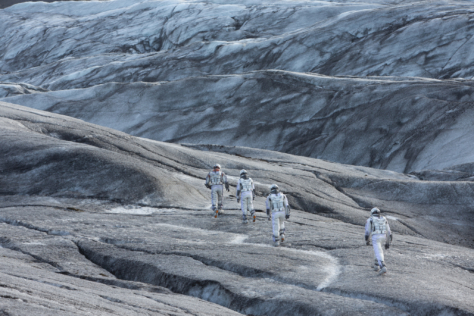
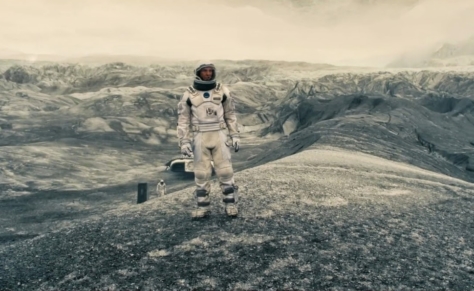
The other thing that I really like about the movie is the ending – I don’t want to say too much but the last five minutes are emotional, tear-jerking, and it made me realise how valuable family and time are.
I can’t recommend it enough, Interstellar is definitely high up on my most favourite movies list!

Conor Regan – Snr. Content Acquisitions Executive
Inception has all the hallmarks we’ve come to expect from a Nolan film: beautiful cinematography; thrilling action; a non-linear narrative; mind-bending visual effects; a pulsating Hans Zimmer score, and ruminations on philosophy and metaphysics.
But for me, one thing in particular gives it an edge over his other work, and that’s how moving it is.
Because if you take away the talk of extractions and projections, what we’re left with is a man, who’s exiled from his family, doing anything it takes to get home. And it’s this simple narrative strand that anchors the movie, and gives it its emotional heft.
Key to the film’s power is Dominick Cobb, Inception‘s brilliant, yet troubled, protagonist.
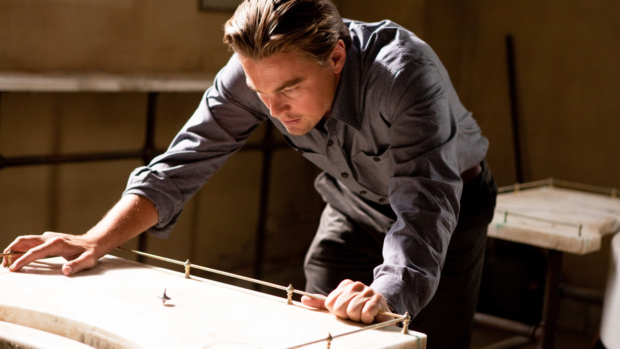
Like the director’s best characters, he’s a bundle of contradictions, and far from the “good guy” archetype of way too many action flicks. He mightn’t always be likeable, but, as we learn more about his backstory, we come to understand his motivations and empathise with his situation.
The closing scene, in particular, packs a serious emotional gut-punch. Without giving too much away, it’s a rollercoaster of excitement, tension, release, and ambiguity that stays with you long after the credits have rolled.
Inception isn’t just my favourite Nolan, but one of my favourites full stop. An awesome film.

Jane Boland – Marketing Executive
My favourite Christopher Nolan film has to be The Dark Knight, the second film in his Batman trilogy.
Although I am a big superhero film fan, I love how Nolan steers clear of the supernatural elements that make up a large part of most Marvel plots and presents to us a very relatable and realistic superhero story.
Although the problems faced were not as catastrophic as saving the universe, they seemed bigger and more impressive to overcome knowing the hero had no supernatural powers contributing to the outcome.
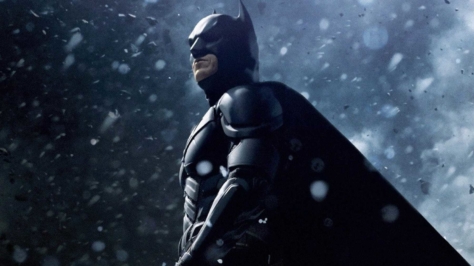
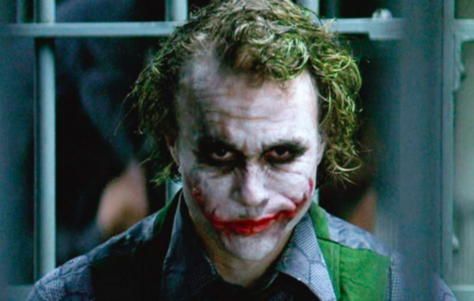
The casting was 10/10 with an outstanding performance from Heath Ledger as the Joker, which for many people carried the entire film. However, Christian Bale brought two great characters to life; the strong crime-fighting Batman and the wealthy yet troubled Bruce Wayne.
Intense action scenes such as the opening bank robbery scene and the car chase/truck flip are iconic still to this day.
I think I need a Batman trilogy movie marathon now!
Tenet will be available for inflight entertainment systems from January 2021. At Inflight Dublin, we pride ourselves on providing the best film, TV, audio and innovative content to our clients – and that includes Christopher Nolan films! If you’d like to learn how we can do the same for your airline, make sure to get in touch; you can contact us here.
All images property of Warner Bros. Entertainment Inc. All rights reserved.
Why It’s Great: The Darjeeling Limited
Wes Anderson has made so many great movies, it’s inevitable that one of them would be a bit overlooked.
The Darjeeling Limited is that movie. And it’s a shame! Because it’s wonderful, and right up there with The Grand Budapest Hotel and The Royal Tenenbaums.
So. With The French Dispatch hitting inflight screens soon (can’t wait), it’s a good time to dust off this sort-of-forgotten-about gem.
Here are six reasons why The Darjeeling Limited is great.
The Cast
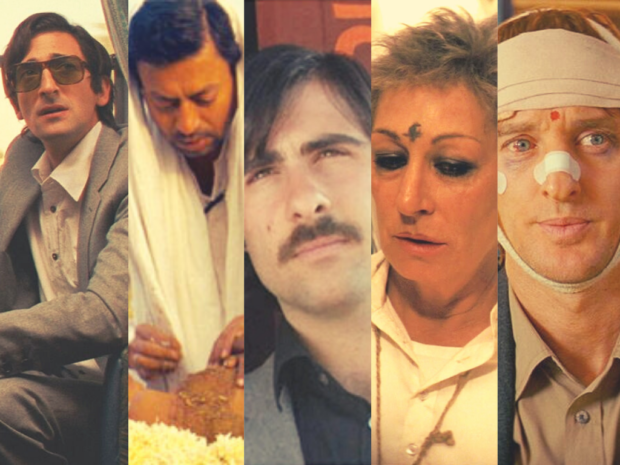
The Darjeeling Limited is about three brothers who, following their father’s death, take a train journey across India that (they hope) will provide healing, self-discovery and enlightenment.
The controlling elder brother, Francis, could be grating if played by the wrong actor: but Owen Wilson injects such sweetness and pathos into the role, that it’s hard not to like him.
Adrien Brody, meanwhile, brings a sensitivity to the icy and cynical Peter, while Jason Schartzmann plays Jack with a perfect combination of charm and world-weariness.
Anjelica Huston is as good as you’d expect as the brothers’ estranged mother, and celebrated (and sadly, recently deceased) Indian actor, Irrfan Khan, gives a standout performance as a bereaved father.
And yes, Bill Murray makes an appearance too.
As far as casting goes, it’s hard to fault the movie.
It’s a Real Tearjerker
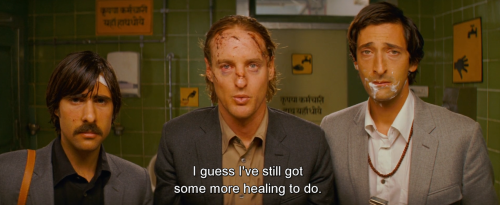
The Darjeeling Limited is one of Anderson’s most human and affecting films.
There are a number of moving moments, like the brothers’ reunion with their mother, or the death of the village boy. But the final scene is the best example (be warned – spoilers dead ahead!):
At this point, the brothers have accepted the loss of their father, and are ready to let him go. This is symbolised by how they leave their luggage behind as they jump on the departing train.
A simple metaphor, yes, but a powerful one too, and it makes for a wonderfully bittersweet conclusion.
Personally speaking, The Grand Budapest Hotel might be his most emotionally resonant movie, overall – that was something else. But Darjeeling is a close second.
India and its People
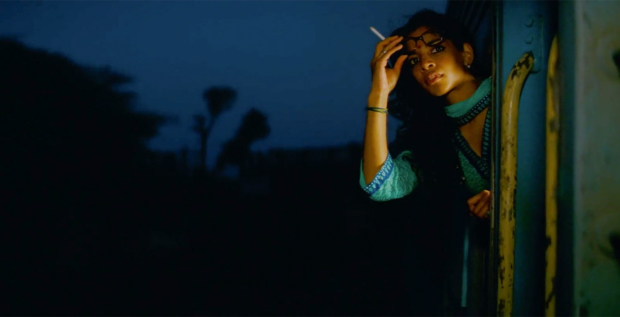
This was Wes Anderson speaking in a 2007 interview, and his affection for the country translates to the big screen.
Whether it’s a taxi ride through the crowded streets of Jodhpur, or a wide-angled shot atop the Udaipur mountains, or in the ornately decorated train, Anderson’s India is vibrant and stunning to look at.
But it’s not just the location. It’s the people, too.
From the large cast of local extras, to more prominent roles like Rita, The Chief Steward and The Father, almost every scene is teeming with interesting, and brilliantly performed, native characters.
Both of these elements, combined, create an India that’s authentic, complex and alive.
Visual Style
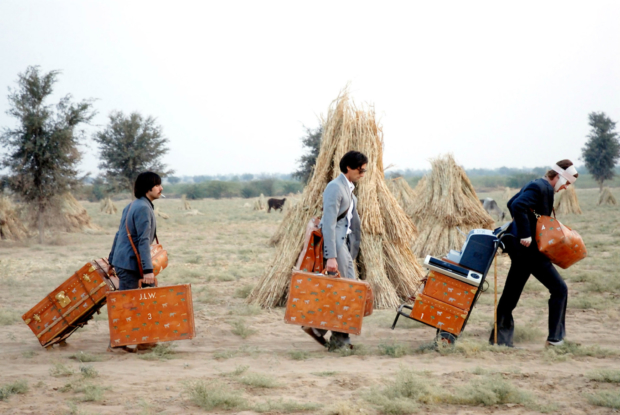
Extended tracking shots; symmetrical framing; meticulous set design; slo-mo; lavish costumes and whip pans. Just some of the stylistic signatures that have made Anderson one of Hollywood’s most distinctive directors.
All are present and correct in the movie, and they create an aesthetic that is both instantly recognisable and lovely to look at. Check out the below scene for some classic Anderson-isms:
We expect a high standard of visual loveliness from the director, and he doesn’t let us down in Darjeeling.
Brotherly Love
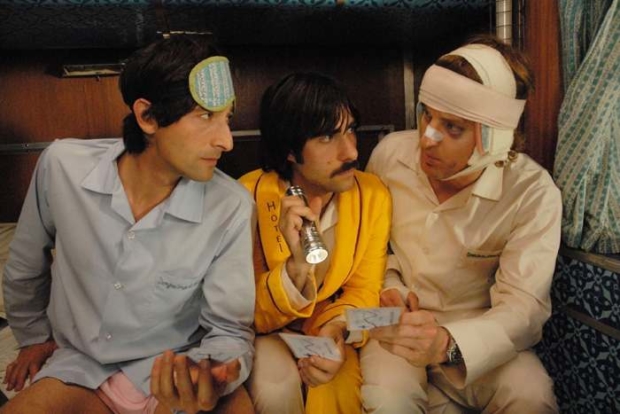
In this 2018 article, Marshall Shaffer writes how he “can’t think of a film that pinpoints the way brothers operated in a space together quite as accurately as The Darjeeling Limited“.
He’s absolutely right.
Brody, Wilson and Schartzmann mightn’t look like brothers, but they act like it. Take any given scene, and it’s all there: the bickering; the subtle jabs; the layered communication and the thrown fists.
But more importantly, and we see it more as the film progresses, is the love and affection that they have for one another.
Anderson has a gift for portraying dysfunctional and fractured families onscreen – The Royal Tenenbaums and Moonrise Kingdom are two fine examples.
But The Darjeeling Limited is where he did it best.
Humour
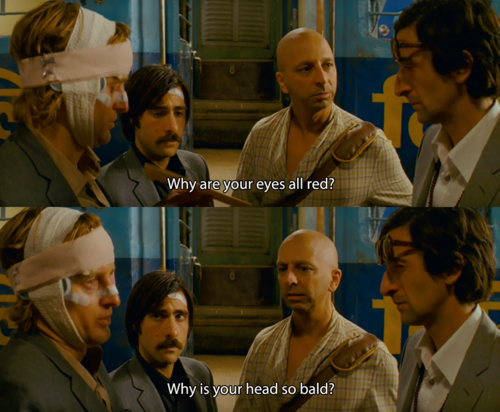
Comedy has always been an essential ingredient in Anderson’s movies, providing relief from their oftentimes sad and nostalgic themes. The Darjeeling Limited is no exception.
There are more than a few big laughs, but this is the biggest:
It’s a hilarious scene. The build-up to Francis and Peter wrestling on the ground is brilliantly done, and Jack’s line two minutes in (“I love you too, but I’m gonna mace you in the face!”) is one of my favourites.
Or how about this exchange between Peter and Jack. It’s the director at his deadpan best:
Jack: What did he say?
Peter: He said the train is lost.
Jack: How can a train be lost? It’s on rails.
Classic. How can you not love this film?
Written by Conor Regan.
At Inflight Dublin, we pride ourselves on providing the highest quality film, TV and audio content to our clients. If you’d like to learn how we can do the same for your airline, make sure to get in touch mail@inflightdublin.com
Further Reading
- “The Unpopular Opinion: The Darjeeling Limited is Wes Anderson’s Best Film” by Marshall Shaffer. Slashfilm.com.
- “Why The Darjeeling Limited is Wes Anderson’s Best Film” by Nathaniel Smith. Littlewhitelies.com.
- “The Darjeeling Limited – Film Review” by Philip French. Guardian.com.
Image Credits
- All images courtesy of 20th Century Fox. All rights reserved.
Becoming The Boss: Bruce Springsteen’s “Born to Run”
Pre-Born to Run: 1973-1974
Given his popularity for the last four-plus decades, it’s strange to think of a time when Bruce Springsteen wasn’t The Boss.
But rewind back to 1974, and this was just the case.
He had just released two albums (Greetings from Asbury Park, N.J. and The Wild, the Innocent & the E Street Shuffle) that had underperformed commercially, and his label, Columbia Records, were losing confidence.
The third one would be make-or-break: he needed to deliver, and in a big way.
But, before he could get to work, there was a hurdle to get over first.
As a way of testing the waters, Columbia decided that they’d only fund a single, not an album. Get on the radio, and they’d put up for the new record. If not, Bruce was on the first Greyhound bus back to New Jersey.
Good thing, so, that the song he came up with was “Born to Run”.
The career-saving anthem didn’t come quickly – recording sessions dragged on for six months – but when the dust settled, Springsteen would have his first big hit, and, crucially, a label that was now on-board.
Next up was the album of the same name.
Line-up Changes and Recording Problems
Things got off to a rocky start when keyboardist David Sancious, and drummer Ernest “Boom” Carter, decided to leave the E-Street Band.
Both excellent musicians whose playing was central to “Born to Run”‘s frenzied sound, it was an unwelcome and untimely blow.
The search for replacements wasn’t without its difficulties, as Springsteen memorably described in his 2016 memoir:
Eventually, Max Weinberg and Roy Bittan, two veterans of the Broadway circuit, joined on drums and keyboard.
As replacements go, he couldn’t have chosen better. They’d bring a solidity and finesse to the music, and become longstanding members (both are still in the band to this day).
Bruce and the E-Street gang then decamped to The Record Plant to get to work.
The sessions were, understandably given the circumstances, long, stressful and intense.
Springsteen, despite labouring over every individual note and tempo change, was chronically dissatisfied and, as time went on, some started to question if the album would ever get completed.
But fast-approaching tour dates would force his hand. Scheduled to coincide with the album’s release, they provided a much-needed deadline: now, for better or worse, he needed to finish the job.
So, a few frantic studio sessions later, he decided to cut (what he thought were) his losses; Born to Run was released, at last, on August 25th, 1975.
The Album Drops
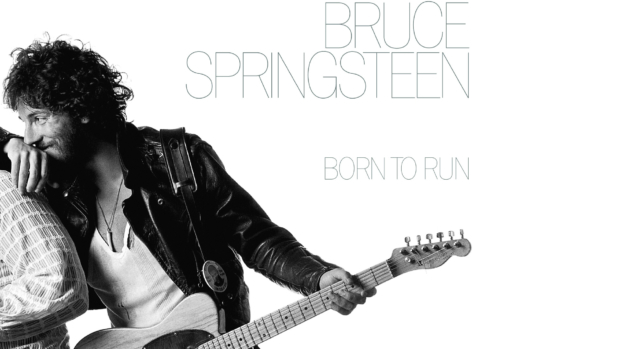
He needn’t have been so worried.
Born to Run quickly became a monster hit and would, in time, become recognised as one of the best rock albums of all time.
“Thunder Road” kicks it all off. Following a gentle intro of piano and harmonica, Bruce enters with one of his most iconic verses:
Screen door slams
Mary’s dress waves
Like a vision she dances across the porch
As the radio plays
The song gradually builds in intensity, until a Clarence Clemons’ sax solo, played over a deep half-time feel, brings things to a very theatrical, and very powerful, crescendo.
Is there a better opener to an album than “Thunder Road”? A thrilling introduction to the world of Born to Run and the characters that inhabit it, it’s just perfect.
“Tenth Avenue Freeze-Out” follows, and gives us a moment to catch our breath.
Held together by Weinberg’s rock solid backbeat, and elevated by Steve van Zandt’s horn arrangement, it’s a fun, laidback, loose number that draws on Springsteen’s love of Motown.
Quick aside – its 1975 performance at the Hammersmith Odeon is an absolute must-see:
“Night” is overlooked. A blur-collar anthem about frustration and escape, it’s energetic and catchy, and leads us nicely into the fantastic “Backstreets“.
The first of the album’s two epics, this is the discerning fan’s favourite. And with good reason: there’s a lot to love here, especially the raw and intense vocal. The impressionistic lyrics are excellent, too:
Catching rides to the outskirts
Tying faith between our teeth
Sleeping in that old abandoned beach house
Getting wasted in the heat
And then comes the one everyone knows, the one that made it all happen – the title track. It’s so familiar, but still so good: the opening drum fill; the tremolo guitar line; Garry Tallent’s driving and melodic bass; and of course, that hook:
‘Cause tramps like us
Baby, we were born to run
It’s his signature song for a reason.
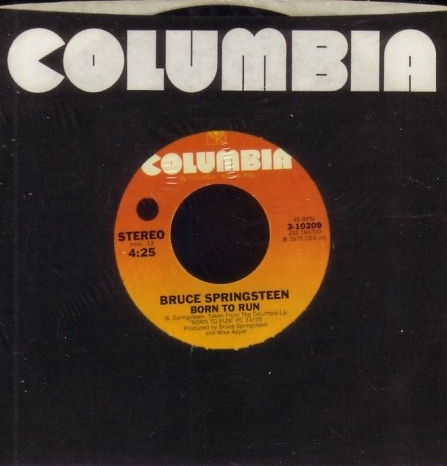
Influenced by Springsteen’s love of ’50’s rhythm and blues, “She’s the One“, is catchy and fun. Because of the ridiculous quality of the rest of the album, it’s the least essential track here – but that’s not to say it’s not great (which it is).
Tom Waits once said that he wished he wrote “Meeting Across the River“. It’s easy to understand why.
Over a sparse arrangement of piano, horn and upright bass, Springsteen spins an evocative yarn about two down-on-their-luck characters looking to score a deal. A haunting deep cut that, being more jazz than rock, highlights Springsteen’s (sometimes underappreciated) ability to bounce seamlessly between genres.
And last but certainly not least, we have “Jungleland“: the best track on the album, and many would say of the songwriter’s career (I’d say “Racing in the Street” personally, but it’s a close thing).
Opening with Suki Laha’s cinematic violin line, this nine-plus minute saga weaves through several movements before climaxing with a beautiful Clemons’ solo – his “greatest recorded moment”, according to Bruce himself.
Then, the song drawing to a close, Springsteen just howls; a stunning moment on an album that’s full of them.
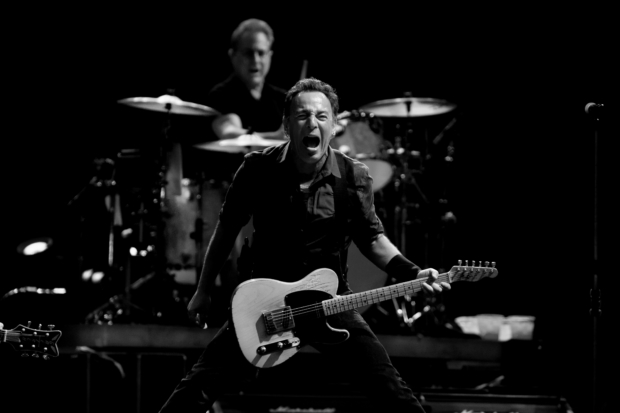
Becoming The Boss
Critically, the album was extremely well-received.
In Rolling Stone, Greil Marcus called it a “masterpiece” that “pays off on every bet ever placed on him”, and it was also voted third best album in the prestigious Village Voice annual poll.
It exceeded commercial expectations too. Peaking at number three in the Billboard charts, it would go triple platinum in 1986, and remains a reliable catalogue seller for Columbia to this day.
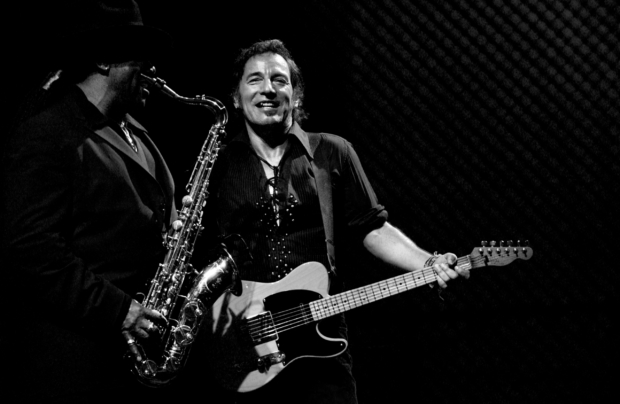
From here on out, the venues would only get bigger, and, by the end of 1975, Springsteen had made history by being on the cover of Time and Newsweek in the same week.
The struggling songwriter who couldn’t get on the radio, and was this close to being dropped, was no more.
In his place, stood the biggest, and most acclaimed, rock ‘n’ roller in the world.
Bruce Springsteen had become The Boss.
Written by Conor Regan.
At Inflight Dublin, we pride ourselves on providing the highest quality film, TV and audio content to our clients. If you’d like to learn how we can do the same for your airline, make sure to get in touch – you contact us here.
Image Credits (in descending order)
- Banner photo by Fabio Diena @ Shutterstock.com.
- The E-Street Band. Photo by Fabio Diena @ Shutterstock.com.
- Born to Run album cover. Photo by Eric Meola @ Colombia Records.
- Bruce Springsteen. Photo by Fabio Diena @ Shutterstock.com.
- Bruce Springsteen and Clarence Clemons. Photo by Fabio Diena @ Shutterstock.com.
International Film Round-Up
When Bong Joon-ho won the Golden Globe for Best Foreign Language Film, he opened his speech with this gem:
Once you overcome the one-inch tall barrier of subtitles, you will be introduced to so many more amazing films.
Wise words indeed.
Many of cinemas’ finest moments aren’t in English, so it’s fantastic to see the International market’s growth of the last few years.
So, in this spirit; here are five titles that I recommend you check out.
All are outstanding, and represent the best of International film.
Enjoy. 🙂
Pain & Glory (Spain)
Pedro Almodóvar’s 21st feature and his first since 2016’s excellent Julieta, Pain and Glory finds the celebrated Spanish director in a contemplative and reflective mood.
Starring long-time collaborative partner Antonio Banderas, the film focuses on ageing director Salvador Mallo as he navigates creative, physical, and existential crises.
Banderas is in top form in what many are calling a career-best performance. Very much worthy of his Best Actor win at Cannes and Oscar nomination for the same, those only familiar with his roles as brawny action heroes (and a certain sword-wielding CGI cat) are in for a welcome surprise.
The supporting cast, comprised of Penelope Cruz, Julieta Serrano, and Leonardo Sbaraglia, is just as impressive, and Alberto Iglesias’ unsettling and melancholic score complements it all perfectly.
A poignant look at growing older and how we come to terms with ourselves, Pain and Glory is a career-best work from the much-celebrated director.
Portrait of a Lady on Fire (France)
Portrait of a Lady on Fire has received a lot of praise for its visual style, and, with its sumptuous cinematography and stark set design, it’s easy to see why.
But it’s not just lovely to look at. A bittersweet romance about two star-crossed lovers, this period piece stays with you long after the credits have rolled.
Taking place in 18th century France, the film tells the story of Marianne, a young painter hired to paint Eloise’s portrait for her upcoming wedding.
However, because she’s a reluctant bride, Eloise is unwilling to commit herself to canvas, so Marianne is forced to paint her in secret. Soon enough, the artist falls for her subject.
As aesthetically pleasing as it is emotionally devastating, Portrait of a Lady on Fire is as David Ehrlich writes in his Indiewire review, “as perfect a film as any to have premiered this year.”
Parasite (South Korea)
Words like “masterpiece” get thrown around a lot, but it seems like the right one to use when describing Parasite.
Funny, unpredictable, thrilling, and moving while also providing a razor-sharp social commentary, this particular film merits the lavish praise that’s come it is way.
Recipient of the Palme D’Or (and an eight-minute standing ovation) at Cannes, it is also, as I’m sure you know, the first non-English film to win the Best Picture Oscar.
Hopefully the first of many.
It’s also had great success at the box office. Bringing in a worldwide total of $266.9 million it has, with ten million-plus admissions, also been seen by more than a fifth of its native South Korea’s population.
About two families at opposite ends of the class spectrum, the film centres around the impoverished Kims and the affluent Parks, and the twisted relationship that develops between them.
I’m going to leave it there though, because the less you know before diving in, the better. I strongly suggest you just do the sensible thing and watch it.
When Hitler Stole Pink Rabbit (Germany)
When I think of war films on the big screen, adult-only ones like Full Metal Jacket, Saving Private Ryan, Dunkirk, and 1917 come to mind.
However, there are others, like Grave of the Fireflies and The Boy in the Striped Pyjamas, that portray the problematic subject in a way that’s suitable for younger viewers.
When Hitler Stole Pink Rabbit, a German film based on the 1974 book of the same name, does this too – and quite brilliantly.
Told through the perspective of 9-year old Jewish girl Anna (a pitch-perfect performance from Riva Krymalowski), it tells the story of her and her family’s escape from Berlin, and subsequent experience as refugees.
This is an excellent adaptation. Tactful in its portrayal while never talking down to its younger audience, it’s a moving watch, and a powerful reminder of the devastating consequences of war.
Shoplifters (Japan)
Hirokazu Koreeda’s Shoplifters was one of the most highly acclaimed films of 2018, garnering critical praise and winning that year’s Palme d’Or.
The film is about a group of outsiders who engage in petty theft to make ends meet.
After one particular shoplifting run, two members of the gang, Osamu and his son Shota, come across a homeless girl in the cold who they decide to take in. They’re all quite content together – that is, until, an unforeseen incident tests the bonds that unite them.
Shoplifters is a touching and thought-provoking film.
It reminded me of the great Ken Loach in how it empathises with those who’ve fallen into poverty, and in the naturalistic, documentary-like way it depicts these lives onscreen.
Critic Robbie Collin nailed it when he calls it, in this review for the Telegraph, “compassionate, socially conscious filmmaking… that steals and snatches your heart”.
It sure does.
Written by Conor Regan, Senior Content Acquisition Executive.
At Inflight Dublin, we pride ourselves on providing the highest quality film, TV, and audio content to our clients. If you’d like to learn how we can do the same for your airline, please do get in touch by sending a message to mail@inflightdublin.com
The Music Biopic in 2020
Record-breaking returns, critical acclaim, packed screenings and loads of awards.
Yep, it’s fair to say that the music biopic has performed pretty impressively recently.
However, it wasn’t always the case.
Because, besides an occasional hit, the genre has historically brought in low to middling box office numbers; certainly nothing compared to traditional blockbuster bankers like action, comedy and drama.
So, what’s changed? What are the reasons for this shift to the mainstream, and why now?
Let’s take a look at a few reasons why.
Bohemian Rhapsody’s Breakthrough
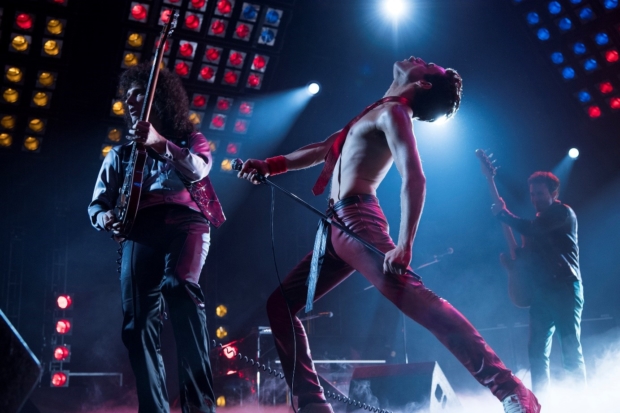
Sometimes a one-off success is needed to bring a style in from the margins, and this is precisely what Bohemian Rhapsody did for the music biopic.
Chronicling Queen’s career from their formation up to that Live Aid performance, it was the ideal introduction for those who knew little about the subgenre.
The numbers were remarkable. The 6th highest-grossing movie of 2018, its $900 million-plus return is especially noteworthy when you consider that Straight Outta Compton was, until then, the top-performing music movie with $201 million (almost $700 mill less!).
But the good news wasn’t just financial. The film won four Oscars as well as Best Motion Picture (Drama) at the Golden Globes, and, with a very respectable IMDb rating of 8.0, is well-liked from an audience perspective.
Such a total, on-all-fronts success was completely unexpected (it even took Brian May by surprise), and proved that the humble music biopic could compete at the box office, and beyond.
Music Streaming

It’s no coincidence that, as streaming has become the dominant model of music distribution and consumption, more music biopics have hit screens than ever before – but how are the two connected?
Well, on the one hand, now that listeners have vast libraries of music at their fingertips, musicians are, generally speaking, being heard by audiences that are more evenly spread across nationalities and generations.
An offshoot from this wider listenership is a heightened interest in the lives of the artists themselves, and the eras from which they came – elements that the music biopic is uniquely well-suited in depicting.
It’s inevitable, so, with the rise of music streaming, so too would there be an increased demand for them.
A downside of streaming though, from the perspectives of the artist and their labels at least, has been the decreased revenue from traditional models (album sales, for instance) – a factor that, as we’ll see in the next point, has also had an impact on the subgenre’s popularity.
Changing Attitudes to Rights

A sticking-point for biopic creators in the past has been the acquisition of an artist’s music and life rights.
The much-delayed Janis Joplin movie is the classic example, so infamous that it was the subject of a particularly excellent 30 Rock parody:
However, things are changing. With the losses felt by the industry due to streaming, artists and labels are becoming increasingly flexible and open, something which Dan Simpson sums up in this article:
But, as Simpson also points to in the same piece, the potential benefits of the biopic aren’t just financial:
Taking these shifts in music and media into account, it’s no wonder that we’re seeing the industry become more flexible when it comes to rights – which means, ultimately, more music movies.
We’ll get that Janis Joplin one yet.
Heightened Audience Appeal

Stories about the rise-and-fall (and rise again) of a character never seem to go out of fashion.
Whether it’s Rocky, It’s a Wonderful Life or The Shawshank Redemption, these type of movies have a universal quality that resonates with us all.
With the up-and-down nature of a life in the spotlight, famous musicians are a natural fit for this type of narrative arc, and Hollywood has recognised this – hence several recent biopics have been based around cosily familiar three-act structures that often conclude with the protagonist’s rebirth.
By shaping the movies like this, filmmakers have been able to tap into an established audience, and this has, in turn, helped push the subgenre to prominence.
Another recent trend has been to soften the biopics’ subjects, and present PG-13 versions of what are often R-rated lives – one example being Queen, whose rock ‘n’ roll lifestyle was toned down for any impressionable kids watching.
Since adult-only music films have historically had a rough time at the box office, the milder ratings of recent ones mean that they can reach a broader, and younger, audience.
In Conclusion!

The music biopic has been one of the major breakout genres of the last few years, and a combination of four factors go some way to explaining why: the enormous success of Bohemian Rhapsody; significant changes in music distribution; shifting attitudes to rights and licensing; and the creation of a more accessible batch of biopics.
Whether it has the staying power of other recent industry trends (superhero movies and remakes, for example) is anyone’s guess. Still, you can be sure that the music movie will be hitting inflight screens for another while at least.
Very welcome news, I’m sure you’ll agree, for music obsessives everywhere. 😉
Written by Conor Regan.
Inflight Dublin prides itself on providing the most current and on-trend film, TV, and audio content to our clients – and this includes music biopics! If you’d like to learn more about our company, and perhaps how we can do the same for your organisation, contact us at mail@inflightdublin.com
Further Reading
-
2020 movies: The best upcoming musical biopics this year, from Elvis to Bowie by Sian Hamer and Tom Eames.
-
Hollywood is hoping music biopics are their new golden ticket by Gregory Wakeman.
-
Rocketmen and stardust: why music biopics dominate the film industry by Dave Simpson.
-
The Year of the Musical Biopic by Katherine Schwartz.
-
Best Music Biopics: 30 Essential Films For Music Fans by Tim Peacock.
Image Credits (in descending order)
-
Bohemian Rhapsody. Photo: 20th Century Fox.
-
Music Streaming. Photo: Unknown @ Canva.com.
-
Cinema Audience. Photo: mail272 @ Canva.com.
-
Lightbulb: Photo : TeroVesalainen @ Pixabay.
What’s Going On Board in September?
The first of the month is always an important day for us here at Inflight Dublin, as it’s when our clients’ inflight entertainment systems are updated with a selection of brand new content.
It’s the day when all those meticulously researched and lovingly curated films go from being an entry on a computer screen, to something that can be tangibly watched and enjoyed by a passenger. It mightn’t seem like much, but for us, it’s pretty exciting!
So, with a new month just around the corner, we’d thought we’d compile a list of just some of the fantastic films that will be going on-board as part of the September update.
And quite an update it is – we’ve got everything from action blockbusters to underground indie films to Bollywood epics, and much more besides.
Happy watching.
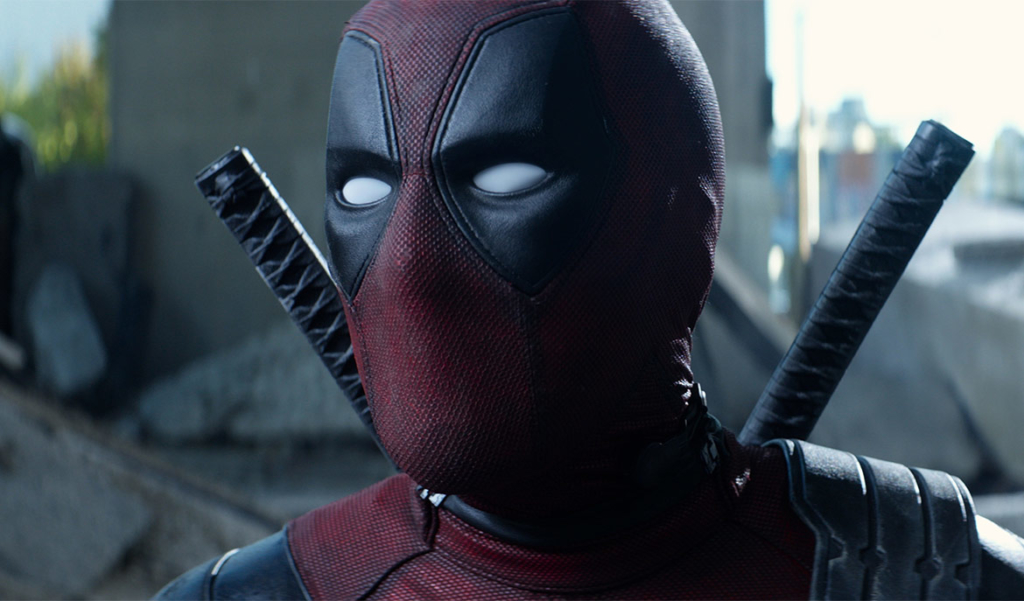
Deadpool 2
With its unique blend of sharp humour, postmodern narrative techniques and visceral action, Deadpool helped revitalise the superhero genre in 2016.
Deadpool 2 doesn’t deviate too much from the formula, but ramps it up, Spinal Tap-style, to eleven, and the result is the rare case of a sequel that’s an improvement on an already great first instalment.
The narrative centres on Ryan Reynold’s masked vigilante and his attempts to protect a young boy, who has supernatural abilities, from a time-traveling antagonist, Cable (played with suitable menace by Josh Brolin).
A critical and box office hit, passengers will love it. As long as they’re over 18. 😉
Tully
Charlize Theron stars as Marlo, a New York suburbanite who’s just given birth to her third son. Approaching breaking point due to the demands of motherhood, her wealthy brother hires Tully, a night-time nanny to help Marlo cope. Fraught at first, the relationship between mother and nanny soon develops into something special.
Tully is about a much overlooked topic in cinema – motherhood. Handling a tricky subject with humour and empathy, director Jason Reitman delivers a fantastic film that, propelled by Theron’s warm, heartfelt performance, is as moving as it is funny. A lovely watch and a perfect airline film.
American Animals
“One of the summer’s freshest, most entertaining films” according to Kenneth Turan of the L.A Times, American Animals is a heist film, but not the sort you’ve seen before.
Starring newcomers Evan Peters, Ann Dowd, Barry Keoghan, and Blake Jenner, the film follows four young Kentuckians and their plans to steal the rarest and most valuable books in their school library.
Subverting the genres’ clichés and hallmarks for something altogether more unique and fresh, passengers will love the film’s taut, slick storytelling and surprisingly philosophical, thought-provoking undercurrent.
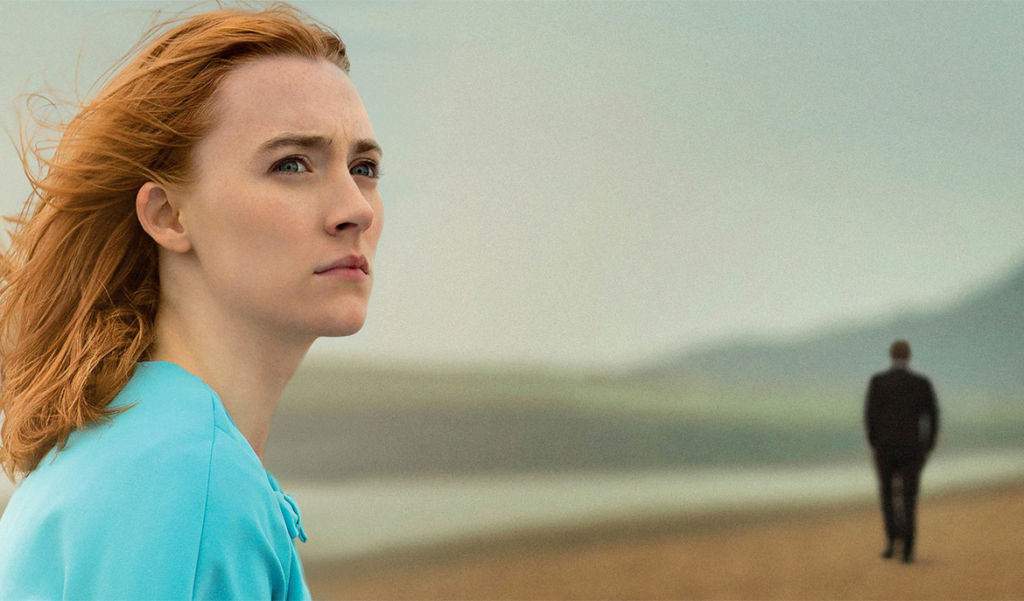
On Chesil Beach
Thanks to pitch-perfect performances in Brooklyn and Lady Bird, Saoirse (that’s pronounced “Ser-Sha”) Ronan has quite rightly established herself as one of the leading actors of her generation, and she returns in On Chesil Beach, a film about the societal pressures in 60s England that threaten to derail an idyllic romance between a young couple.
As is to be expected, Ronan, who stars as Florence, is fantastic, delivering a performance that’s layered with humour and pathos, but Billy Howle, who stars opposite, more than holds his own too.
Established icons of British cinema, such as Emily Watson and Emily-Marie Duff, make up the wider support cast of this rich and engaging film.
Ready Player One
Steven Spielberg returns to the directing chair for the 34th time (yes, you read the correctly – the 34th time) with Ready Player One, a sci-fi adventure adapted from the multi-award winning novel of the same name.
Set in a stunningly realised virtual reality universe called OASIS, it follows Wade Watts (Tye Sheridan) and his attempts to unlock the secrets of the mysterious world and those of its creator, James Halliday.
By blending old school Speilberg-isms with a modern visual style and contemporary cultural touchpoints, the director has created a bold film that is a worthy addition to his otherworldly canon. A must-see for any fans of the director, sci-fi, or just, well, really good movies.
White Fang
Based on the 1906 novel of the same name, White Fang is a timeless adventure about a wolfdog and his coming-of-age that has been loved by generations of children and adults alike.
It has been adapted for the small and big screen before, but never quite like this – animated in a lovely 3D style that is almost like a visual painting, and starring some top-end voice-acting talent (Nick Offerman, Rashida Jones and Paul Giamatti, to name but a few), this is its finest incarnation yet.
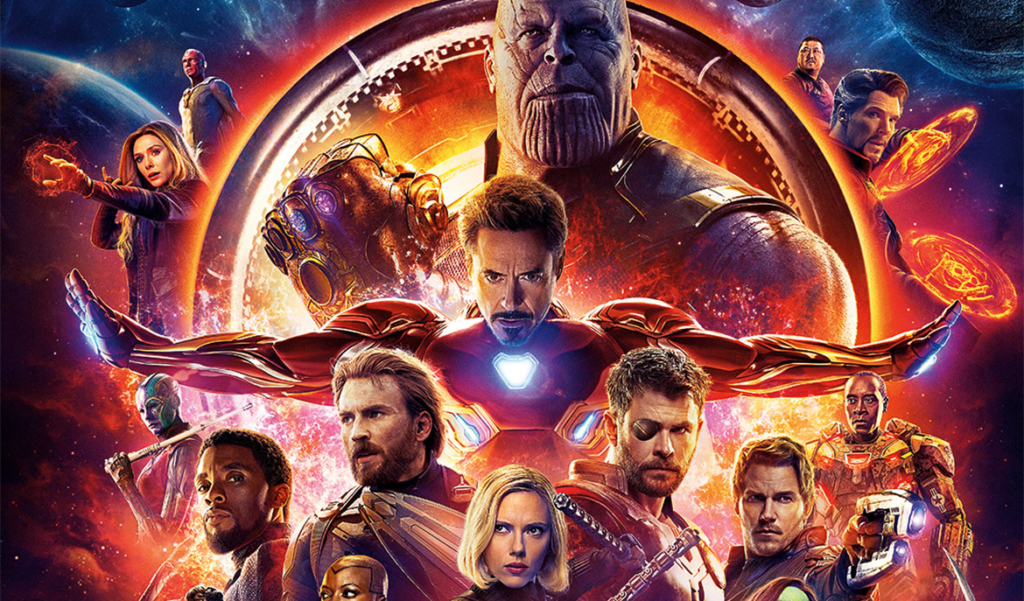
Avengers: Infinity War
Our favourite Marvel superheroes return in Avengers: Infinity War, where they must put aside their differences and team up to defeat the all-powerful, universe-destroying Thanos.
With its all-star cast, sharp, snappy script, engrossing narrative and mind melting action sequences, the film far transcends the massive expectation that preceded its release.
A success both with the critics and at the box office, it’s a blockbuster in the truest sense of the word.
Life Of the Party
Who doesn’t love Melissa McCarthy? From her iconic role as Sookie in Gilmore Girls to taking the lead in global superhits like Spy and The Heat, her loveable presence and instinctive, deft comedic touch lights up the screen.
Life of the Party sees her star as Deanna, a suburban housewife who decides to return to college and kick her life into gear following a painful divorce.
Much partying and hilarity ensues as she embraces her new lifestyle, however it’s to the horror of her daughter Maddie, who just so happens to attend the same school. Eek.
Belle et Sébastien 3, le dernier chapitre
The concluding chapter to the much loved French series about a child named Sébastien and his beloved dog Belle, Belle et Sébastien 3, le dernier chapitre is a heartwarming tale of family, love and loyalty.
In this third instalment we are introduced to the menacing Joseph (played by Clovis Cornillac who you may recognise from 2004 classic Un long dimanche de fiançailles) who claims he used to own Belle and will do whatever it takes to reclaim the Pyrenean mountain dog. Sébastien however, has other ideas.
A visually impressive film packed with snow-capped mountains and grand vistas, Belle et Sébastien 3, le dernier chapitre is a classic good-versus-evil tale that will be loved by the younger passengers on-board.
Rampage
Dwayne Johnson, a.k.a The Rock, brings his signature blend of charm, brawn and humour back to our backseat screens in Brad Peyton’s exhilarating Rampage.
Starring as Davis Okoye, Johnson plays a primatologist who has forged a special bond with George, an exceptionally intelligent silverback gorilla. When the latter becomes infected with a dangerous pathogen, he transforms into a city-destroying predator and up to Davis, and geneticist Kate Caldwell (brilliant played by Naomie Harris), to both save humanity, and the animal that was once his friend.
Solo: A Star Wars Story
Empire magazine curated a list of the greatest Star Wars characters for their August 2018 issue, and you may be curious to know who came in at numero uno – well, it was, of course, everyone’s favourite deep space outlaw, Han Solo.
This much-loved character takes centrestage in Solo: A Star Wars Story, a long awaited prequel that explores the history of the loveable rogue, aswell as the wider Star Wars universe.
Portrayed with just the right amount of brazen charm and cheeky arrogance by Aidan Ehrenceich, the film lives up to its high billing with a sharp script, blistering action sequences and a host of great characters, some of whom longtime fans will undoubtedly recognise.
The Monkey King 3
The third film in the massively popular Chinese franchise sees Aaron Kwok, Feng Shaofeng, Xiao Shenyang and Him Law once again join forces to continue their “Journey to the West” – this time entering a kingdom populated exclusively by woman.
A swashbuckling rollercoaster of a film, The Monkey King 3 is a well-told tale in the classic storytelling tradition that blends fantastic visuals and hilarious comedy. The numbers can speak for themselves, though – since its release, it’s become the fifth highest grossing Chinese film in 2018, raking in over $115 million at the international box office.
Baahubali 2: The Conclusion
A three hour extravaganza of colour and song, Baahubali 2: The Conclusion is a fantasy and adventure epic that drew record numbers worldwide – it currently stands as the first ever film to gross over ₹10 billion, doing so in just ten days.
Taking off from where its predecessor, Baahubali: The Beginning, concluded, this second instalment centres around Amarendra Baahubali, a heroic leader who makes, as Simon Abrams wrote in his five star review for RogerEbert.com, “Conan the Barbarian look like a wimp”.
An exciting and surprisingly complex film, Baahubali 2: The Conclusion is a visual feast, and a must-see for any fan of Indian cinema.
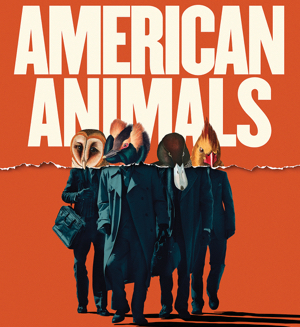

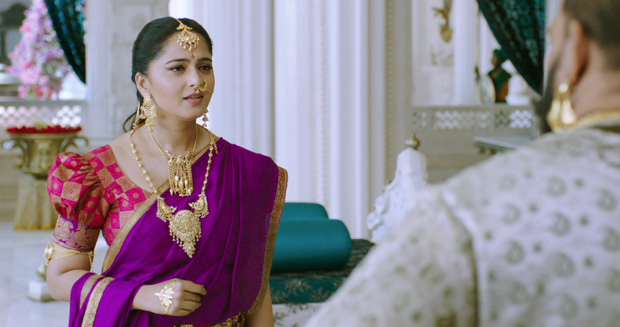
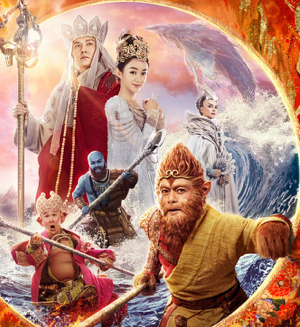
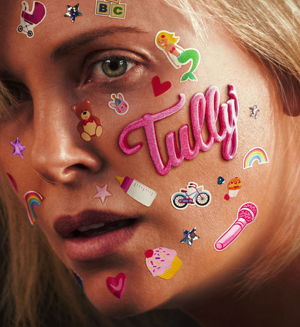


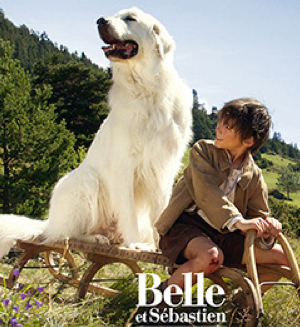
Accounting for Taste: Differences in Genre Popularity Across the World
I recently came across an article called “The Relative Popularity of Genres Around the World” by Stephen Follows and Bruce Nash.
About how liked (or disliked) certain genres are in different countries, it’s a fascinating piece of research.
I thought it’d be a good idea to take a look at their findings.
Let’s dive in.
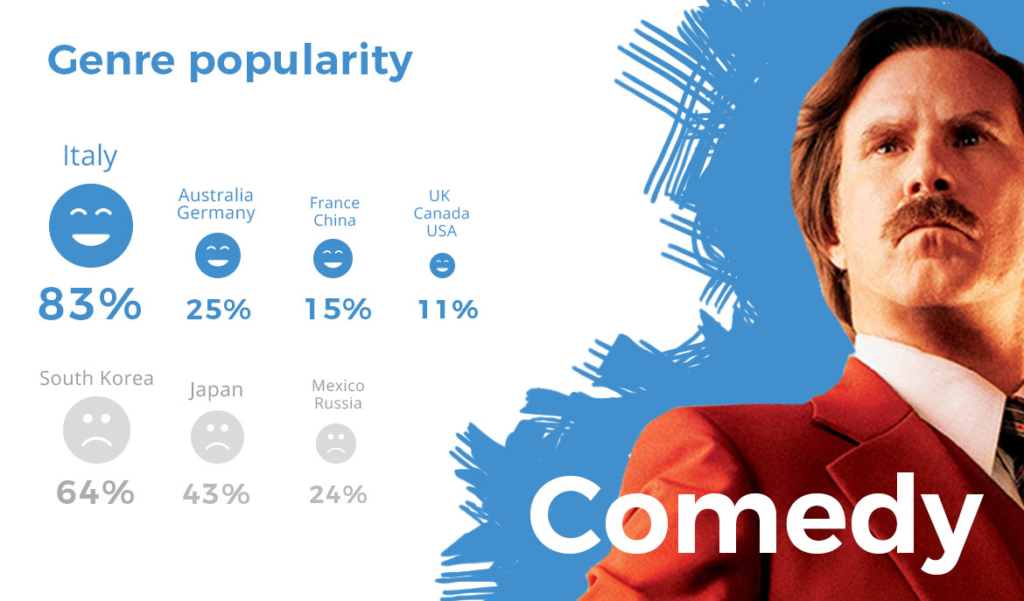
If we take 0% as the global average of a genre’s popularity, we can see, with a rating of 83%, that Italy really loves comedy movies.
I wasn’t surprised to see this. This is, after all, the country that gave us its very own comedy subgenre: commedia all’italiana (or “Comedy the Italian Way”).
At the opposite end, with a score of 64% below the global average, is South Korea.
South Koreans, generally speaking, like the genre to be part of a blend in their films. Parasite, for instance: a movie that’s as much a comedy as it is a thriller and drama.
So it mightn’t be a case that they dislike it, but rather prefer comedy to be another colour in an eclectic mix.
Let’s take a look at action movies.

This is an interesting one.
Whereas Italians are the world’s great lovers of comedy, with a score of 30% below, they’re not too fond of action.
South Korea, who weren’t keen on comedy, love it as much as the Italians don’t: they have a high rating of 40%. The two countries have the opposite taste in films!
The birthplace of Kung Fu, Crouching Tiger Hidden Dragon, Jackie Chan and Bruce Lee, it’s not surprising that China tops the list.
However, for a country that gave us Bruce Willis, Sly Stallone and Chuck Norris, North America’s rating of 17% below is very surprising indeed.
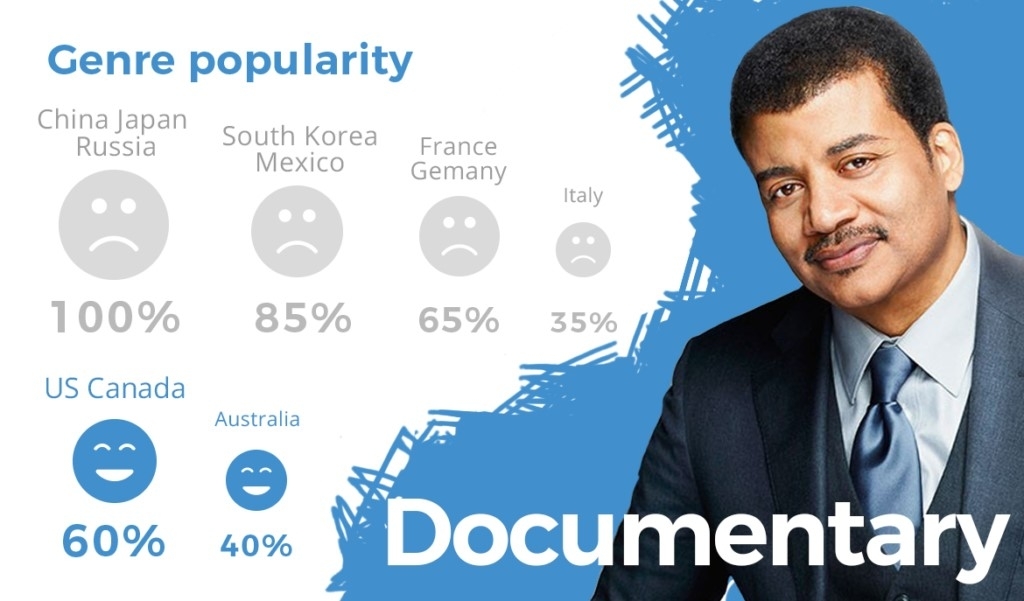
Documentaries are huge in the US and Canada. Given the ubiquity of brands like National Geographic and Discovery, as well as names like Neil deGrasse Tyson, this isn’t unexpected.
The two countries have produced some excellent feature-lengths recently – Apollo 11, RBG, American Factory and Free Solo to name a few – and this has established them as leaders in documentary filmmaking.
There’s a correlation across the three Asian countries (South Korea, Japan and China). They all score well below the global average.
But this doesn’t mean that they don’t produce documentaries, and good ones too: Jiro Dreams of Sushi is one of my perfonal faves, and Last Train Home, Old Partner and Up the Yangtze are worth checking out too.

Remember what I wrote about South Korea and Italy having opposing tastes? Well, hold that thought. Because, with scores of 50% and 40% respectively, both countries find common ground in a love of drama.
But the most curious stat here is the UK.
Much like how I was taken aback by the US’ lack of love for action, I was surprised by the UK’s rating for drama.
This is the country that gave us everything from Shakespeare to Austen to The Crown; surely there has to be a greater appreciation than 2% below?
I would wager that if plays, novels and TV were included, we’d see the UK at the top of this one. Perhaps that’s a study for another time!

Considering their lack of love for comedies (24% below), it’s interesting that Russians like the genre a lot more when there’s some romance thrown in.
I wasn’t surprised when I saw this, though.
I recently researched the Russian market and it struck me that, along with action and historical films, the country produces a lot of rom-coms.
Status Free, Ice 2, Imperfect Man and How I Became Russian come to mind; cheerful, easygoing crowd-pleasers that packed Russian cinemas.
Mexico leads the way with a score of 18% above.
Recent romance-tinged Hollywood blockbusters, like The Shape of Water and Fifty Shades Freed, did well here. Both went to number one at the domestic box office, and accrued higher grosses in Mexico than in similarly-sized territories.
The country has a healthy market for homegrown romances too; Tod@s caen with a gross of $136 million, was 2019’s best performing Mexican language film.

Mexican cinemagoers are an open-minded bunch; not only do they love romance, but horror movies too.
This is what critic Justina Bonilla had to say about the country’s ties to the genre (I recommend reading the original article here):
On the flipside of the coin, the genre dies a gruesome death in China where we see the highest disapproval rating yet: 100% below the global average. Roger Garcia, executive director of the Hong Kong film festival, gave his take in this 2016 interview:
Conclusion
Follows and Nashs’ figures aren’t an exact science, and there will always be exceptions. Action films that do well in Italy for instance, or horrors that fall flat in Mexico.
Nevertheless, there’s no doubting that it’s an important and insightful piece of cinematic research.
The findings show us, not just the specific likes and dislikes of a given country, but how changeable and fluid genre popularity is; depending on the territory and culture, you can have wildly different results.
To each their own, I guess!
At Inflight Dublin, we pride ourselves on providing the highest quality film, TV and audio content to our clients. If you’d like to learn how we can do the same for your airline, get in touch. Connect with us here.
Image Credits
- Images created by Inflight Dublin, based on the research by Stephen Follows and Bruce Nash of the American Film Market.
Further Reading
- “The Relative Popularity of Genres Around the World” by Stephen Follows and Bruce Nash.
- “Why Scary Chinese Movies Are So Scarce” by Li Anlan.
- “15 Movies to Get You Started With Mexican Horror” by Carlos Aguilar.
- “The Era of Italian Comedy” by Ancos.
- “The Top-Rated Movie in Every Country” by Emily Petsko.

